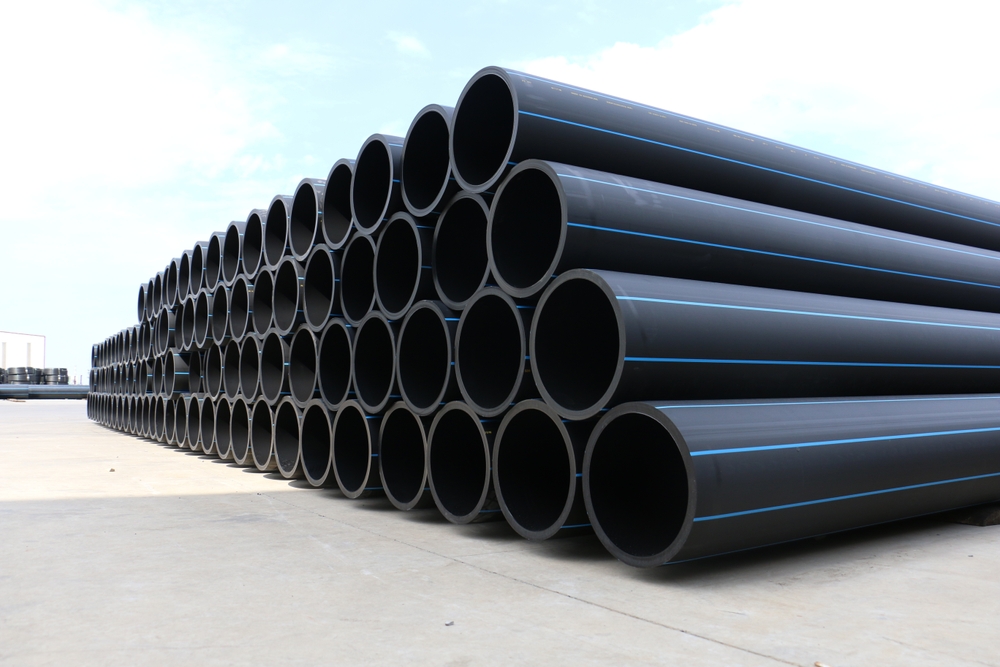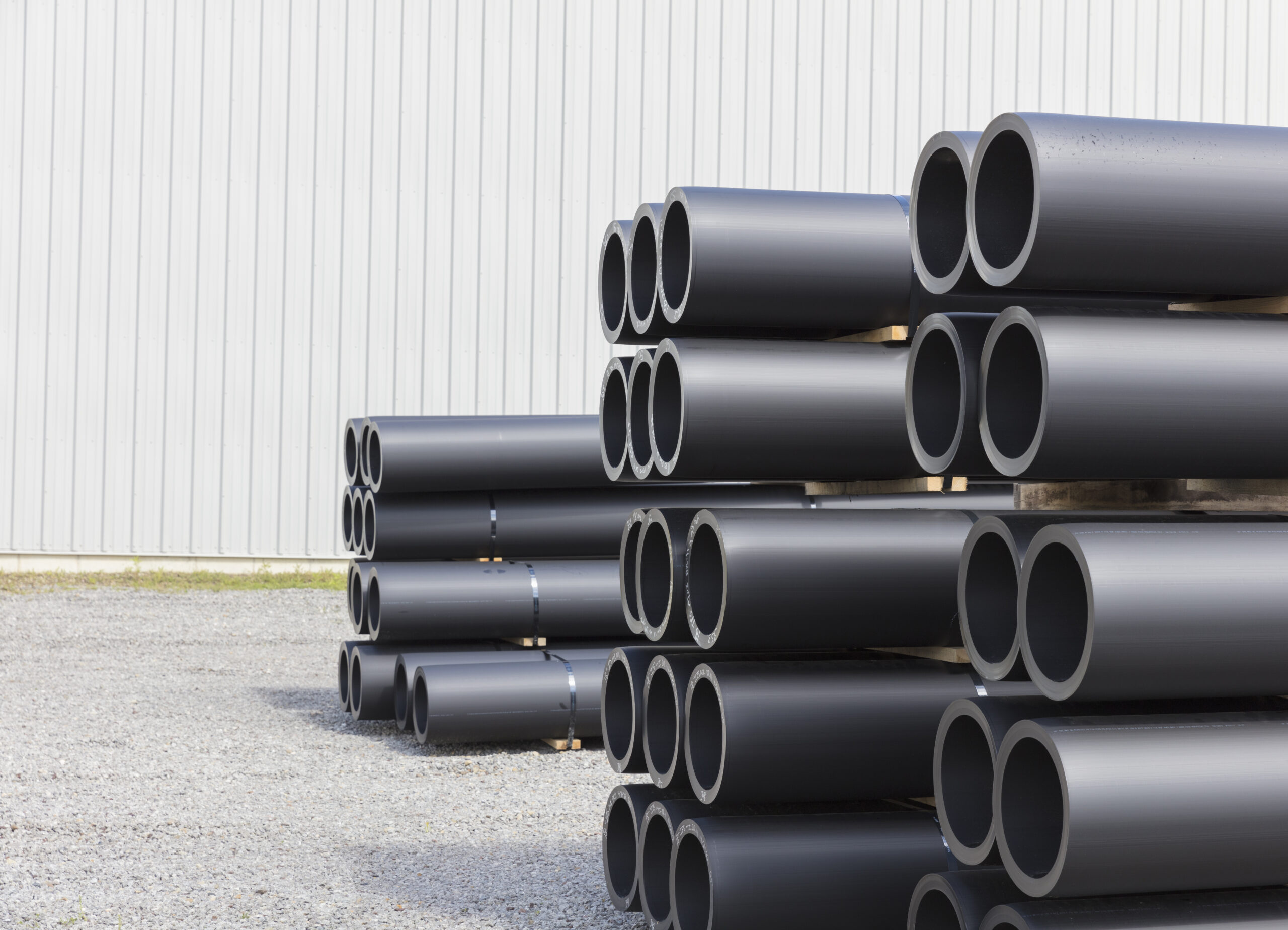How to Connect hdpe pipe fittings Midland TX for Optimal Flow
Discover the Production Refine Behind High-Quality HDPE Pipeline and Its Applications
The production process of top quality HDPE pipes is detailed and systematic. It begins with the selection of resources that enhance performance. Following this, ethylene undergoes polymerization to form material, which is after that formed with extrusion. Quality control is extremely important, ensuring that the end product fulfills stringent criteria. Nonetheless, the trip of HDPE pipelines does not end with manufacturing. Their applications across various industries disclose a more comprehensive value worth examining.
Recognizing HDPE: Residences and Advantages

High-density polyethylene (HDPE) is a flexible thermoplastic understood for its sturdiness and resistance to different ecological aspects. This material exhibits excellent tensile toughness, making it ideal for demanding applications. Its low-density framework adds to a lightweight item, helping with ease of taking care of and setup. HDPE likewise showcases amazing resistance to chemicals, which reduces deterioration when subjected to extreme substances.
The material's reduced wetness absorption additionally boosts its long life, making it excellent for use in pipes and storage space tanks. Furthermore, HDPE is immune to ultraviolet (UV) radiation, guaranteeing that products preserve their honesty also when exposed to sunlight. Moreover, its versatility enables the development of detailed forms without compromising toughness. The eco-friendly nature of HDPE, commonly originated from recycled materials, contributes to its allure, advertising sustainable methods in production. Overall, these homes and benefits make HDPE a favored option for various industrial and customer applications.
Resources Option for HDPE Production
The option of basic materials for HDPE manufacturing is important to confirm the end product satisfies the wanted specs and top quality standards. High-density polyethylene (HDPE) is mainly generated from polymerized ethylene, originated from nonrenewable fuel sources such as natural gas or petroleum. The high quality of these feedstocks substantially affects the mechanical and thermal homes of the last HDPE.
Ingredients likewise play a significant duty in boosting HDPE's efficiency, including antioxidants, UV stabilizers, and colorants, which enhance longevity and resistance to ecological factors. The selection process should consider not just the chemical structure of the raw materials yet additionally their processing qualities to assure efficient production.
The sourcing of raw products ought to focus on sustainability and compliance with ecological policies, as liable practices are necessary in today's market. Ultimately, cautious raw product selection lays the structure for producing high-quality HDPE pipelines ideal for varied applications.
The Extrusion Process: Shaping HDPE Pipeline
The extrusion procedure plays an important duty in shaping HDPE pipes, starting with meticulous material prep work strategies that ensure perfect circulation and consistency. Similarly important is the style of the die, which directly influences the last dimensions and surface top quality of the pipe. With each other, these factors contribute substantially to the efficiency and high quality of HDPE pipe production.
Product Prep Work Strategies
Efficient production of HDPE pipes starts with thorough product preparation methods, especially the extrusion procedure. During this phase, high-density polyethylene resin is first dried to eliminate moisture, ensuring excellent circulation attributes. The resin is then fed into the extruder, where it undergoes home heating and melting, changing right into a viscous state. This heating process is carefully regulated to keep the product's honesty and performance. The molten HDPE is forced through a die, shaping it into a continual pipeline type. Proper temperature management during extrusion is essential, as it directly affects the material's residential properties and the last item top quality. As soon as formed, the HDPE pipeline is cooled down and reduced to specified lengths, all set for succeeding handling and applications.
Die Layout Significance
Precision in die style plays a necessary function in the extrusion process of HDPE pipes. The die functions as the last shaping tool, straight affecting the pipeline's dimensions, wall thickness, and surface area coating. A properly designed die guarantees consistent material flow, reducing issues such as irregularities and vulnerable points. The geometry of the die need to be optimized to fit the particular buildings of HDPE, including its viscosity and thermal actions during extrusion. In addition, the cooling rate of the product as it travels through the die can considerably influence the pipe's structural honesty. Spending in innovative die innovation is important for suppliers aiming to create high-quality HDPE pipelines that meet industry requirements and consumer assumptions.
Quality Assurance Steps in HDPE Manufacturing
Although numerous aspects affect the quality of HDPE pipe production, reliable top quality control measures are critical to guarantee consistency and reliability in the end product. Trick quality assurance practices include extensive material evaluation, confirming that the raw polyethylene meets recognized requirements for pureness and thickness. Throughout the extrusion process, specifications such as temperature, stress, and cooling time are carefully checked to maintain dimensional accuracy and architectural honesty
Furthermore, post-production testing is essential; suppliers commonly perform hydrostatic examinations to assess the pipe's strength and resistance to pressure. Visual evaluations for surface area problems further boost high quality assurance. Certification from appropriate standards companies, like ASTM or ISO, offers an added layer of reputation. By applying these complete quality control actions, producers can decrease defects, improve efficiency, and make sure that the HDPE pipelines meet the certain requirements of different applications, ultimately causing consumer fulfillment and rely on the item.
Applications of HDPE Pipe Throughout Industries
HDPE pipes are made use of throughout numerous sectors because of their resilience and versatility. In water circulation systems, they guarantee effective shipment, while in wastewater management, they offer trusted solutions for waste transportation. Additionally, agricultural irrigation networks take advantage of HDPE's resistance to corrosion and flexibility, making it an excellent choice for modern-day farming practices.

Water Circulation Solutions
A significant variety of sectors depend on high-density polyethylene (HDPE) pipes for efficient water circulation systems. Understood for their durability and resistance to deterioration, HDPE pipes are extensively utilized in community water supply networks, agricultural irrigation, and industrial applications. Their lightweight nature assists in very easy handling and installment, reducing labor costs and time. Furthermore, HDPE pipelines can suit numerous stress degrees, making them ideal for both reduced and high-pressure systems. hdpe pipe fittings Midland TX. The versatility of the product enables seamless combination right into existing framework, reducing the requirement for considerable excavation. Furthermore, HDPE's resistance to chemical leaching guarantees that the water delivered stays risk-free and tidy, making it an excellent choice for maintaining the quality of drinkable water across various industries
Wastewater Administration Solutions
Effective water distribution systems additionally lead the way for innovative wastewater administration solutions, where high-density polyethylene (HDPE) pipelines play a significant function. Prominent for their longevity and resistance to rust, HDPE pipes are perfect for moving wastewater in numerous setups. Their flexibility permits simple setup in intricate settings, decreasing the demand for extensive excavation. Additionally, HDPE's smooth interior surface reduces more info friction, boosting circulation prices and performance. These pipelines are additionally immune to chemical leaching, ensuring that pollutants do not jeopardize the surrounding environment. Industries, towns, and treatment facilities increasingly count on HDPE pipelines for their integrity and durability, making them a favored option for modern wastewater monitoring systems. This flexibility emphasizes the important value of HDPE pipes throughout numerous applications.
Agricultural Watering Networks
Agricultural irrigation networks benefit greatly from the usage of high-density polyethylene (HDPE) pipes, which offer efficient and trusted water distribution to crops. HDPE pipelines are lightweight, making them very easy to deliver and set up, while their flexibility enables various arrangements in diverse surfaces. These pipes show outstanding resistance to corrosion, chemicals, and UV radiation, making sure resilience in harsh farming environments. In addition, their smooth interior surface area minimizes friction loss, maximizing water flow and lowering energy prices connected with pumping. The longevity of HDPE pipes, frequently exceeding half a century, adds to decrease maintenance and substitute expenses. As a result, farmers significantly depend on HDPE pipelines to boost irrigation performance and promote lasting agricultural methods, inevitably bring about improved plant returns and resource preservation.
Future Trends in HDPE Pipeline Modern Technology
As the demand for lasting and effective facilities expands, improvements in HDPE pipeline modern technology are poised to transform various sectors. Arising fads include the integration of smart innovations, such as sensors and IoT capacities, which help with real-time surveillance of pipe problems, minimizing maintenance costs and avoiding leaks. Furthermore, the growth of innovative production methods, such as 3D printing, is making it possible for the production of complicated, customized pipe layouts that cater to certain task needs.
Furthermore, the concentrate on recycling and round economic situation techniques is driving the development of HDPE pipes made from recycled products, enhancing sustainability. Boosted jointing methods, such as electro-fusion and mechanical fittings, are additionally improving installation efficiency and reliability. The expanding focus on environmental policies is pressing makers to embrace greener manufacturing procedures, guaranteeing that HDPE pipelines not only meet industry criteria however also promote a more lasting future for facilities development.
Regularly Asked Concerns
Just How Does HDPE Compare to Various Other Plastic Materials?
HDPE exceeds many various other plastic materials pertaining to longevity, chemical resistance, and versatility. Its low density and high tensile toughness make it excellent for different applications, frequently going beyond options in both performance and durability.
What Are the Environmental Influences of HDPE Manufacturing?
The ecological effects of HDPE manufacturing consist of greenhouse gas emissions, power consumption, and prospective pollution from making processes. Furthermore, improper disposal can bring about soil and water contamination, raising issues about long-lasting eco-friendly results.
Can HDPE Pipes Be Recycled?
Yes, HDPE pipes can be recycled. Lots of centers approve made use of HDPE for processing, transforming it into new items. This reusing adds to sustainability efforts, minimizing plastic waste while saving sources and power in the production cycle.
What Is the Life-span of HDPE Pipes?

Exactly How Do Temperature Level Variations Impact HDPE Pipeline Efficiency?
Temperature level variants significantly influence HDPE pipeline performance, impacting versatility and toughness. High temperatures can lead to softening, while low temperatures may cause brittleness, ultimately influencing the pipeline's durability and suitability for various applications in diverse environments.